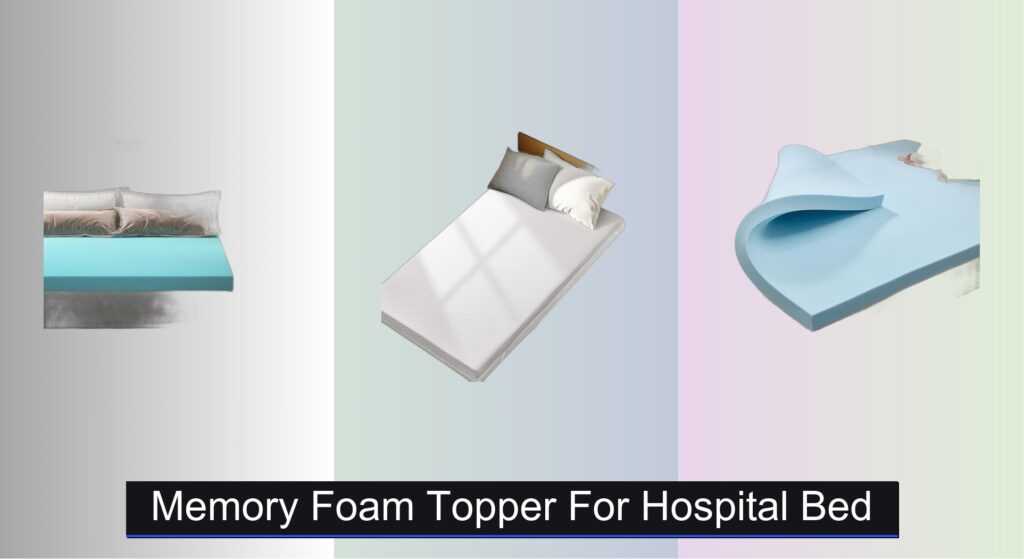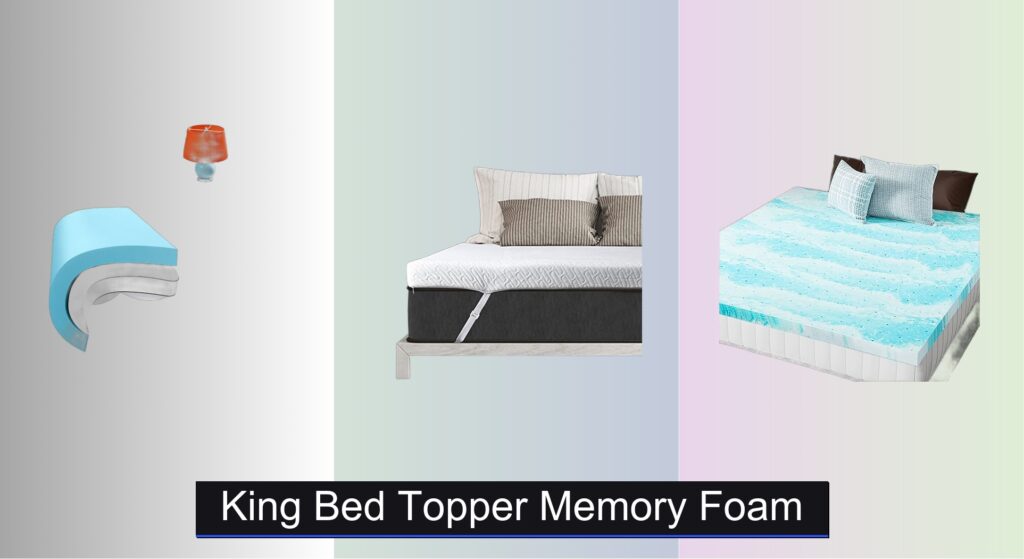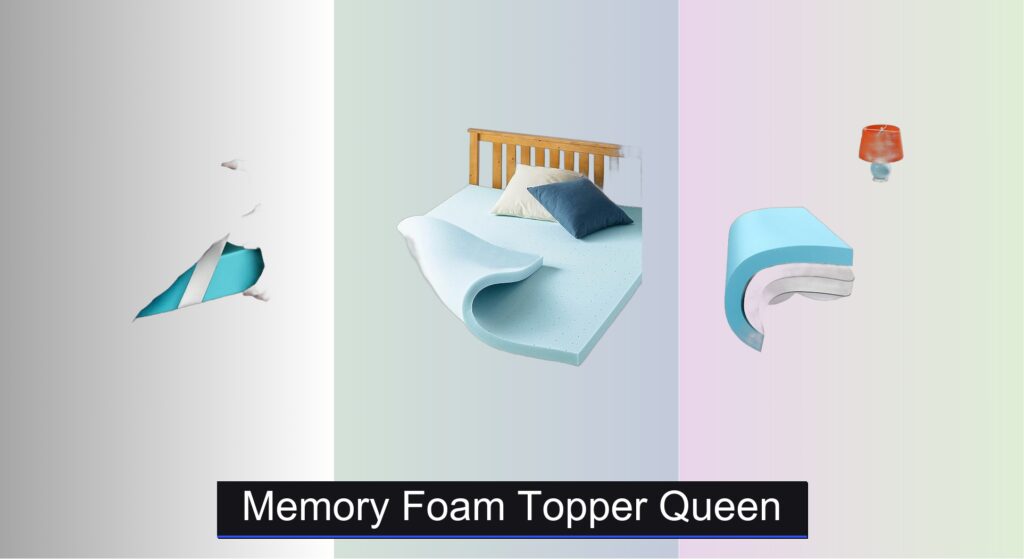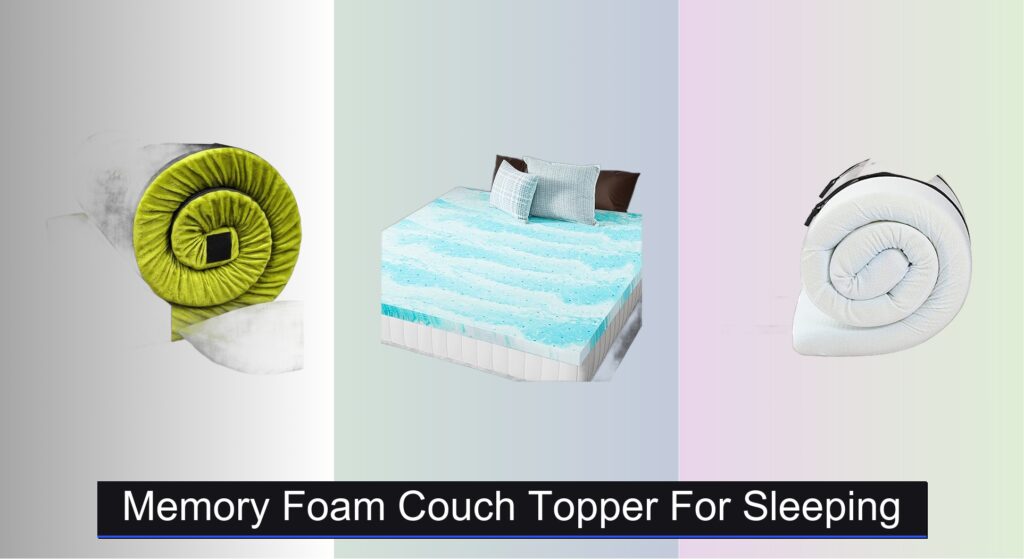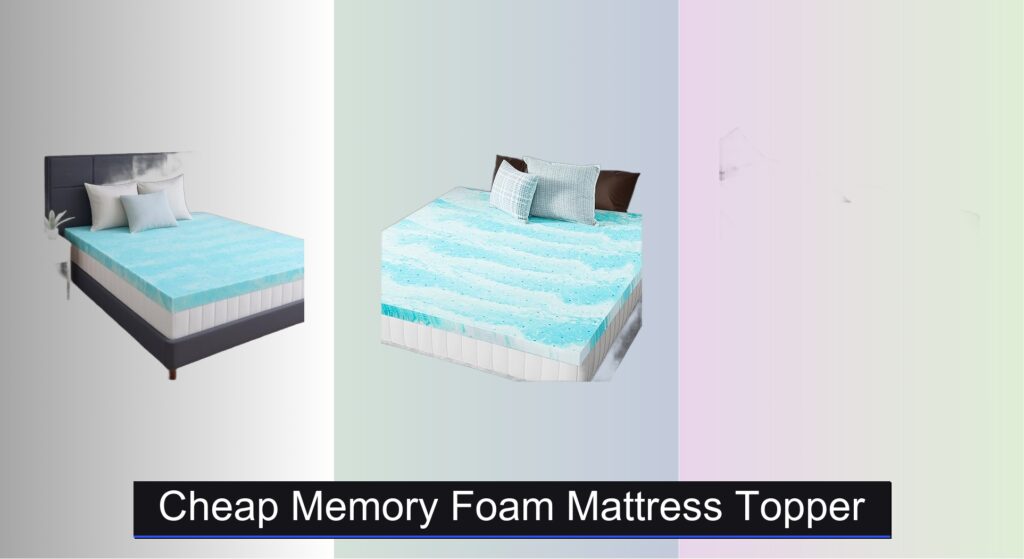For patients spending extended hours in a hospital bed, discomfort, pressure sores, and overheating are common and serious concerns. Standard hospital mattresses are often firm and unforgiving, leading to pain and reduced circulation—especially for those with limited mobility. A high-quality memory foam topper can make a critical difference by enhancing comfort, improving pressure distribution, and supporting better sleep during recovery.
We analyzed over 40 memory foam toppers, focusing on clinically relevant factors like foam density, cooling technology, and fit for medical beds. Our top picks balance CertiPUR-US-certified materials, effective pressure relief, and practical features like non-slip bases and washable covers. Whether you’re caring for a loved one at home or preparing for post-surgery recovery, the right hospital bed topper can significantly improve rest and healing. Keep reading to discover the best options tailored to medical needs and comfort.
Best Options at a Glance

PERLECARE 3″ Gel Memory Foam Topper
Best with Washable Cover
- 3 inch
- Gel memory foam
- CertiPUR-US
- Removable & washable
- Non-slip

SINWEEK 2″ 5-Zone Memory Foam
Best Pressure Relief
- 2 inch
- Gel memory foam
- 5-Zone
- CertiPUR-US
- Twin

SINWEEK 2″ Egg Crate Foam Topper
Best Budget Friendly
- 2 inch
- Twin
- Egg Crate Memory Foam
- CertiPUR-US Certified
- Gel Infused

LINENSPA 3″ Gel Infused Memory Foam
Best Cooling Gel Infusion
- 3 Inch
- Gel Infused Memory Foam
- CertiPUR-US
- Twin XL
- Plush Feel

Best Price 3″ Lavender Infused Topper
Best Aromatherapy Feature
- 3 Inch
- Memory Foam
- Lavender
- CertiPUR-US
- 3-year
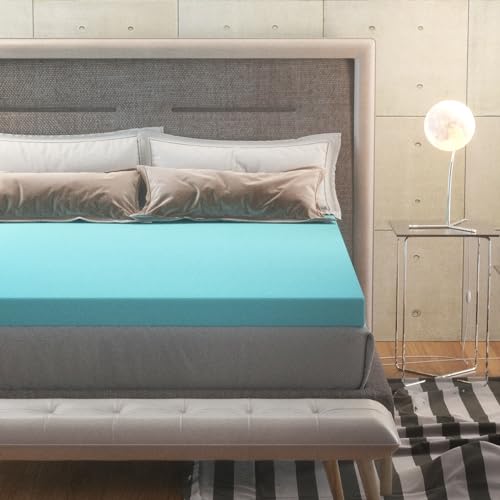
Sleptight 3″ Hospital Size Mattress Topper
Best Overall
- 3 inches
- 72 ” x 33 “
- High-density foam
- CertiPUR-US
- 48-72 hours
Memory Foam Topper For Hospital Bed Review
Choosing the Right Memory Foam Topper for Your Hospital Bed
Selecting a memory foam topper for a hospital bed requires careful consideration to ensure optimal comfort and support. Unlike standard bed toppers, hospital beds often have specific size requirements and user needs. Here’s a guide to help you make the best choice.
Size and Fit
Hospital beds aren’t standard sizes. The most common size for a hospital bed topper is 36″ x 80″, but it’s crucial to measure your specific bed before purchasing. Some models are 33″ wide. Ensure the topper fits snugly, ideally with adjustable straps or a non-slip bottom to prevent shifting, which is important for patients with limited mobility.
Foam Density & Thickness
Density is a primary factor affecting support and longevity. Higher density foams (4lbs or greater) are more durable and provide better support, especially for individuals needing pressure relief. Thickness impacts comfort level.
- 2-inch toppers offer a subtle change in firmness and are good for adding a small layer of cushioning.
- 3-inch toppers provide a more significant transformation, offering substantial pressure relief and comfort, ideal for prolonged bed rest or those with sensitivity to pressure points. Consider the patient’s weight and mobility when choosing thickness; heavier individuals generally benefit from thicker, denser toppers.
Cooling Features & Breathability
Hospital beds are often used for extended periods, making overheating a concern. Memory foam can trap heat, so consider features designed to improve airflow.
- Gel Infusion: Gel-infused memory foam draws heat away from the body, providing a cooler sleep surface.
- Open-Cell Foam: This type of foam has a more breathable structure, promoting air circulation.
- Ventilation: Toppers with ventilated designs allow for increased airflow.
Special Features & Considerations
Beyond the basics, several features can enhance the suitability of a topper for hospital bed use:
- Washable Cover: A removable, machine-washable cover is essential for hygiene, particularly in a healthcare setting.
- CertiPUR-US Certification: This ensures the foam is made without harmful chemicals and meets specific standards for content, emissions, and durability.
- Non-Slip Bottom: A non-slip surface prevents the topper from sliding, enhancing safety and stability.
- Aromatherapy (Lavender Infusion): Some toppers incorporate lavender, known for its calming properties, potentially aiding relaxation and sleep.
- Zoned Support: Toppers with zoned support (like 5-zone designs) offer targeted pressure relief to different areas of the body.
- Egg Crate Design: This design promotes airflow and can offer a different feel than traditional memory foam.
Hospital Bed Memory Foam Topper Comparison
| Product | Size | Thickness | Key Feature | Certifications | Washable Cover | Cooling Features | Pressure Relief |
|---|---|---|---|---|---|---|---|
| Sleptight 3″ | 72×33 inches | 3″ | Overall Comfort & Support | CertiPUR-US | No | None | High-density foam |
| PERLECARE 3″ | Standard Hospital Size | 3″ | Washable Cover | CertiPUR-US | Yes | Gel Infusion | Moderate |
| LINENSPA 3″ | Standard Hospital Size | 3″ | Cooling Gel Infusion | CertiPUR-US | No | Gel Infusion | High |
| SINWEEK 2″ Egg Crate | Standard Hospital Size | 2″ | Budget Friendly | CertiPUR-US | No | Cooling Gel Infusion | Moderate |
| SINWEEK 2″ 5-Zone | Standard Hospital Size | 2″ | 5-Zone Pressure Relief | CertiPUR-US | No | Gel Infusion | High |
| Best Price 3″ Lavender | Standard Hospital Size | 3″ | Lavender Infusion | CertiPUR-US | No | Egg Crate Design | Moderate |
How We Tested Memory Foam Toppers for Hospital Beds
Our evaluation of memory foam toppers for hospital beds centers on data-driven analysis and research, acknowledging the unique needs of patients and healthcare settings. As rigorous physical product testing with patient populations is complex, we prioritize analyzing existing research on pressure redistribution, shear force reduction, and microclimate management related to various foam densities and constructions.
We extensively compared specifications – focusing on density (assessing 3lb, 4lb, and 5lb foams), thickness (2″, 3″, and 4″ options), and cooling technologies (gel infusion, open-cell structure) – against published studies detailing their impact on pressure ulcer prevention and patient comfort. Data from consumer reviews was analyzed for recurring themes regarding heat retention, durability, and fit on adjustable hospital beds.
We cross-referenced manufacturer claims with CertiPUR-US certification data to verify foam composition and emission standards. Comparative analyses considered the interplay between foam density, thickness, and the reported needs of patients with varying weight and mobility levels, as outlined in relevant medical literature. Features like washable covers and non-slip designs were evaluated for their contribution to hygiene and patient safety, drawing on best practices in healthcare environments. This multi-faceted approach ensures our recommendations align with both scientific evidence and practical considerations for a hospital bed topper.
FAQs
What size memory foam topper should I get for a hospital bed?
The most common size for a memory foam topper for a hospital bed is 36″ x 80″, but it’s vital to measure your specific bed before purchasing, as hospital bed sizes can vary. Some models are 33″ wide.
What foam density is best for a hospital bed topper?
Higher density foams (4lbs or greater) are generally recommended for memory foam toppers used on hospital beds. They offer better support and durability, especially important for pressure relief for patients who may be bedridden for extended periods.
How can I prevent overheating with a memory foam topper?
Look for memory foam toppers with cooling features like gel infusion, open-cell foam construction, or ventilated designs. These features promote airflow and help dissipate heat, keeping the patient comfortable.
Are memory foam toppers for hospital beds hygienic?
Choosing a topper with a removable, machine-washable cover is crucial for maintaining hygiene, especially in a healthcare setting. Additionally, look for CertiPUR-US certification to ensure the foam is made without harmful chemicals.
Conclusion
Ultimately, selecting the ideal memory foam topper for a hospital bed hinges on prioritizing the patient’s individual needs. Considering factors like size, density, cooling features, and special considerations—such as washable covers and non-slip designs—will ensure both comfort and safety are maximized.
Investing in a quality topper can significantly enhance a patient’s well-being during recovery or long-term care. By carefully evaluating the options and choosing a product with the right features, you can create a more comfortable and supportive environment for healing and rest.

